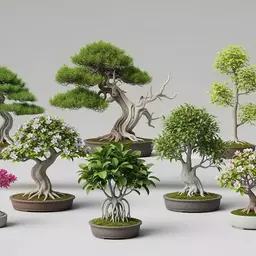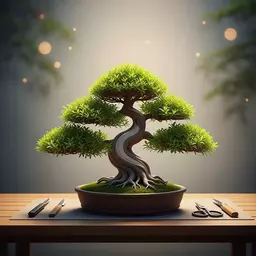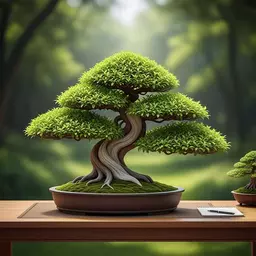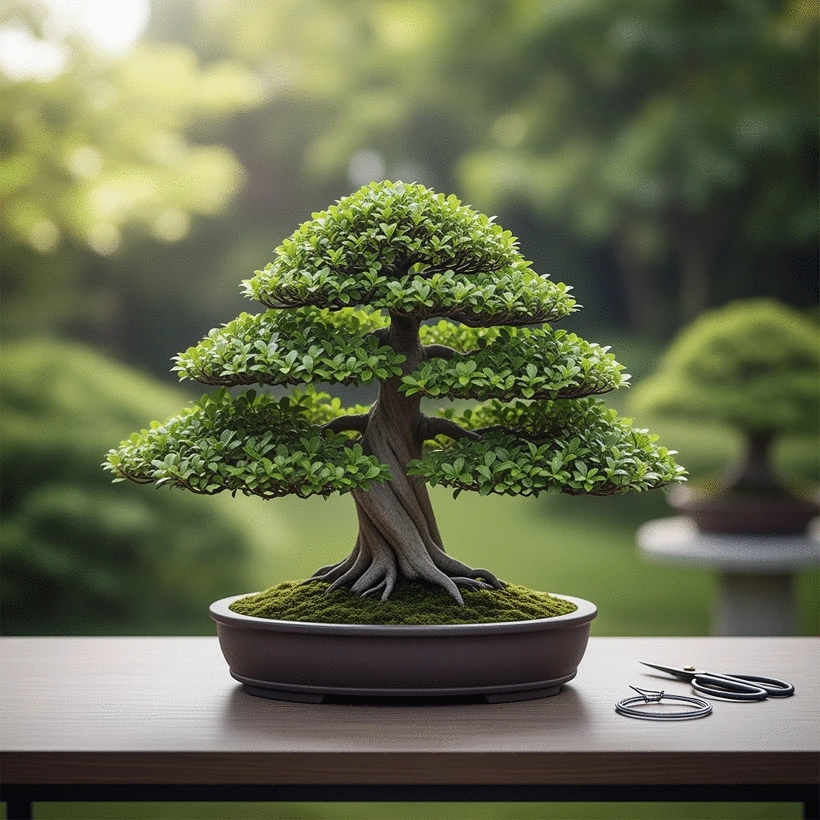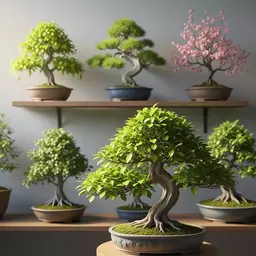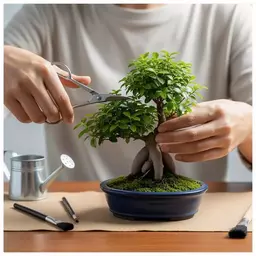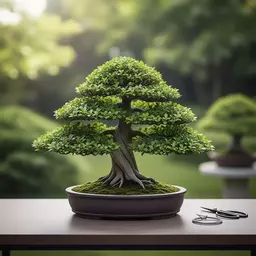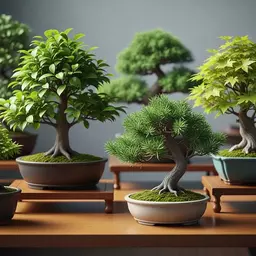Advanced Bonsai Styling Techniques
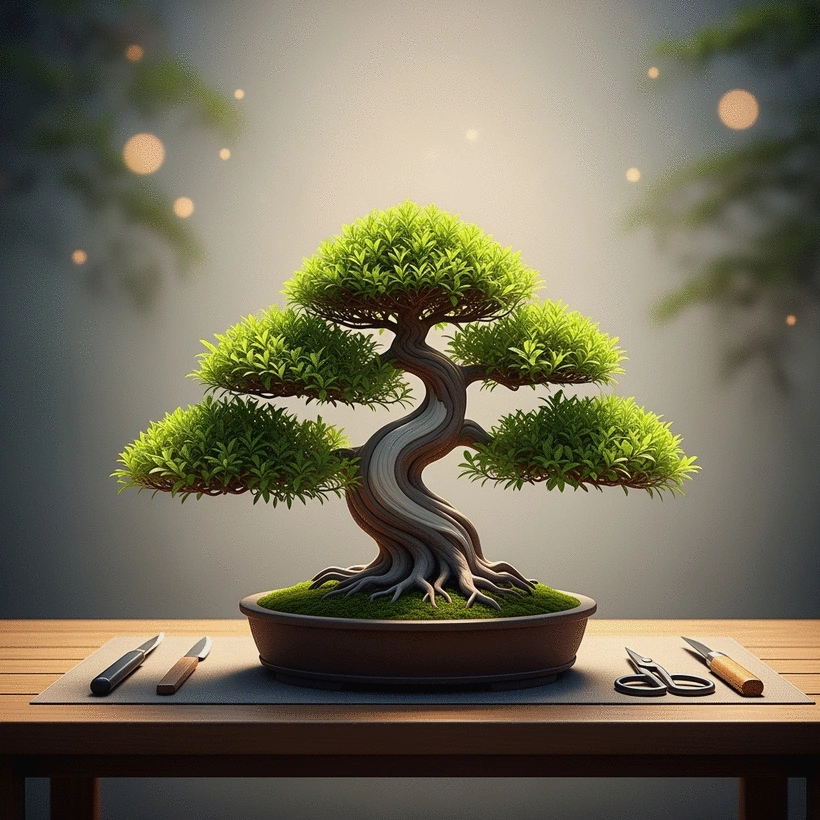
As you embark on your bonsai journey, consider this: each tree is not merely a plant, but a living testament to your patience and creativity. The art of bonsai goes beyond aesthetics; it’s a profound connection between nature and the human spirit.
What You Will Learn
- Embrace the philosophy of bonsai as a journey that cultivates a deep emotional connection with your tree.
- Learn key design principles—balance, proportion, and unity—that enhance the aesthetic and health of your bonsai.
- Master advanced grafting techniques such as approach and thread grafting to elevate your bonsai's beauty and vitality.
- Discover effective branch bending and shaping strategies to achieve a natural silhouette for your bonsai.
- Understand the importance of root styling and methods like root pruning and layering to ensure your bonsai's stability and health.
- Reflect on your personal bonsai journey and how each tree embodies your unique artistic vision and growth.
- Take actionable next steps by selecting techniques to focus on, documenting your progress, and engaging with fellow enthusiasts.
Journey to Bonsai Mastery: Techniques & Disciplines
Bonsai cultivation is an intricate art form blending philosophy, design principles, and advanced techniques. The visual below outlines the core elements and methods essential for developing stunning living masterpieces. For those just starting, understanding bonsai care basics is a great first step.
Philosophy & Principles
- ✓ Nature's Inspiration
- ✓ Emotional Connection
- ✓ Artistic Expression
- ✓ Balance & Proportion
- ✓ Unity & Harmony
Advanced Techniques
- ● Grafting (Approach, Thread)
- ● Branch Bending (Wire)
- ● Root Pruning & Layering
- ● Species-Specific Styling
- ● Visualizing Tree Growth
Understanding Advanced Bonsai Styling Techniques
Bonsai is not just about growing small trees; it’s a profound art form that reflects the harmony between nature and human creativity. Each twist and turn in the branches tells a story shaped by cultural and environmental influences. Understanding these influences is essential for anyone looking to master advanced bonsai styling techniques.
The philosophy behind bonsai artistry is rooted in a deep appreciation for nature. Many cultures, particularly in Japan, regard bonsai as an expression of the divine in the natural world. This connection compels us to honor our trees and create living pieces of art that echo the landscape from which they originate.
The Philosophy of Bonsai Artistry
At Shire Bonsai, we believe that bonsai cultivation is a journey of patience and creativity. The philosophy of bonsai goes beyond the aesthetic; it's about fostering a relationship with your tree. As you nurture it, you'll find that the journey shapes not just the bonsai, but also you as the artist. To learn more about this connection, explore seasonal care for your bonsai.
- Nature’s Inspiration: Draw upon the natural environments of each species to enhance their styling.
- Emotional Connection: Cultivate a bond with your bonsai, allowing its growth to mirror your own experiences.
- Artistic Expression: Use bonsai as a canvas to express your creativity and personal vision.
By embracing these elements, you’ll develop a unique perspective that enhances your bonsai artistry and pushes your skills to new heights.
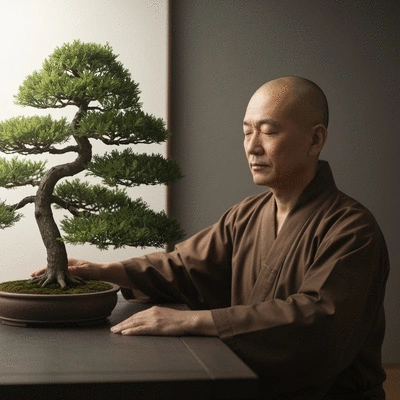
Key Design Principles in Bonsai Styling
Every advanced bonsai artist must embrace certain key design principles. These guidelines help ensure that your bonsai not only looks beautiful but also remains healthy and true to its species. Understanding these principles allows you to create well-balanced and aesthetically pleasing trees.
- Balance: Strive for visual harmony in your tree’s structure, foliage, and pot.
- Proportion: Ensure the size of the tree, branches, and leaves are proportionate to each other.
- Unity: Maintain a cohesive look that reflects the natural beauty of the species.
Incorporating these design principles into your work will elevate your bonsai styling, creating a seamless blend of art and nature that captivates those who behold it.
Advanced Techniques for Mastering Your Bonsai
Now that we've established the foundational philosophies and design principles, it's time to dive deeper into the advanced techniques that will truly refine your skills. Whether you're interested in grafting, branch bending, or root styling, each method offers unique opportunities to elevate your bonsai.
Grafting Techniques to Enhance Your Bonsai
Grafting is a fascinating technique that allows you to combine the strengths of two different plants into one stunning bonsai. There are several methods to choose from, including approach grafting and thread grafting. Each technique has its own set of instructions and applications, which can be tailored to fit the specific needs of your bonsai.
- Approach Grafting: This method involves bringing two plants close together and joining them at the cambium layer.
- Thread Grafting: A technique that allows you to thread a new branch into an existing one to encourage growth.
Understanding how to effectively apply these grafting techniques will enhance your bonsai's health and aesthetic appeal, giving you new avenues for creativity.
Species-Specific Grafting Examples
Different species respond to grafting techniques in unique ways. For instance, Pines may thrive with approach grafting, while Maples can benefit from thread grafting. Here are some examples to guide you:
- Pines: Use approach grafting to integrate different varieties and enhance needle density.
- Maples: Thread grafting can help introduce new cultivars or improve branch structure.
By applying these species-specific techniques, you can ensure that your bonsai not only looks beautiful but also thrives in its environment.
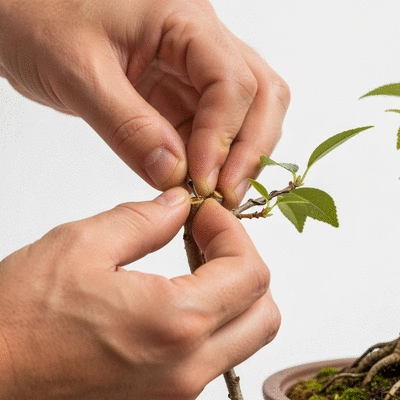
Advanced Branch Bending and Shaping Strategies
Bending and shaping branches is a delicate art that requires practice and patience. The goal is to create a natural-looking form that enhances the bonsai's overall silhouette. You can utilize various tools and techniques to achieve the desired aesthetics.
- Wire Techniques: Using wire is essential for bending branches without damaging them.
- Angle Considerations: Pay attention to the angle at which you bend the branches for a natural look.
Mastering these strategies will allow you to transform your bonsai into a stunning representation of nature, further deepening your connection to the art. For a deeper dive into shaping, consider exploring bonsai wiring: a simple guide.
Root Styling: Techniques for a Solid Foundation
The roots of your bonsai are just as important as the branches and leaves. Proper root styling not only enhances the aesthetics of your tree but also ensures its health and stability. Here are some methods to consider:
- Root Pruning: Regularly prune roots to encourage growth and maintain a compact root structure.
- Layering: Use layering techniques to create a visually appealing root spread that supports the tree.
By focusing on root styling, you'll create a strong foundation that complements your bonsai's overall design, ensuring that it continues to thrive for years to come.
Pro Tip
When styling your bonsai, always take a moment to observe its natural growth patterns. Each species has its own unique characteristics; for instance, a Juniper may thrive with a relaxed and flowing style, while a Ficus often benefits from a more structured approach. By aligning your creative vision with the tree's natural tendencies, you'll create a more harmonious and vibrant bonsai.
Frequently Asked Questions About Advanced Bonsai Techniques
Q: What is the philosophical basis of bonsai artistry?
A: The philosophy of bonsai artistry centers on a deep appreciation for nature, fostering an emotional connection with the tree, and using it as a medium for artistic expression. It's a journey of patience and creativity that shapes both the tree and the artist.
Q: What are the key design principles for effective bonsai styling?
A: The key design principles include Balance (visual harmony), Proportion (correct sizing of tree elements), and Unity (a cohesive look reflecting the species' natural beauty). Adhering to these principles ensures an aesthetically pleasing and healthy bonsai.
Q: Can you explain grafting techniques like approach and thread grafting?
A: Approach grafting involves bringing two plants close together and joining their cambium layers to integrate their strengths. Thread grafting is a technique where a new branch is threaded into an existing one to encourage growth, often used for improving branch structure or introducing new cultivars.
Q: How important is root styling for a bonsai?
A: Root styling is crucial for both the aesthetic appeal and the health and stability of a bonsai. Techniques like root pruning maintain a compact root structure, while layering creates a visually appealing and supportive root spread, contributing to the tree's overall design and longevity.
Q: How can I continue my bonsai learning journey?
A: To continue your journey, focus on a specific technique each month, document your progress with photos, consider joining workshops or classes, and engage with other bonsai enthusiasts online or in local clubs to share knowledge and gain inspiration.
Reflecting on Your Bonsai Journey
As you delve deeper into the world of bonsai, it's essential to take a moment to reflect on your journey. Integrating advanced techniques and philosophies into your bonsai practice not only enhances your skills but also enriches your connection to these living works of art. Each snip and bend tells a story of patience, creativity, and dedication. When you adopt these advanced methods, you're not just shaping a tree; you're embracing a philosophy that celebrates the beauty of nature's complexities.
This journey is filled with learning, growth, and transformation. By understanding the underlying principles and actively applying them, you'll find yourself developing a unique style that resonates with your personal vision. Remember, every bonsai you cultivate reflects a piece of your spirit, making your journey as important as the final creation itself!
Next Steps for Your Bonsai Transformation
Now that you've explored various advanced techniques, it's time to consider how you can apply them to your own bonsai creations! Start by selecting a few methods that resonate with you, whether it's enhancing your grafting skills or experimenting with branch shaping. Embrace the learning process and don’t hesitate to make mistakes along the way—each error is an opportunity for growth!
- Choose a specific technique to focus on this month.
- Document your progress and take photos to track your growth.
- Consider enrolling in a workshop or class to sharpen your skills further.
- Engage with fellow bonsai enthusiasts online or in local clubs for support.
At Shire Bonsai, we believe in fostering a community of passionate plant lovers. I encourage you to share your experiences and creations with us! Whether you’re refining a classic style or embarking on a new design, your journey can inspire others. Let’s celebrate the art of bonsai together, creating a tapestry of shared knowledge and creativity!
Recap of Key Points
Here is a quick recap of the important points discussed in the article:
- Embrace Nature's Inspiration: Draw upon the natural environments of each species to enhance their styling.
- Understand Key Design Principles: Focus on balance, proportion, and unity to create aesthetically pleasing bonsai.
- Utilize Advanced Techniques: Explore grafting, branch bending, and root styling to refine your bonsai skills.
- Foster Emotional Connections: Cultivate a bond with your bonsai, allowing its growth to mirror your own experiences.
- Engage with the Community: Share your journey and creations with fellow enthusiasts for support and inspiration.
